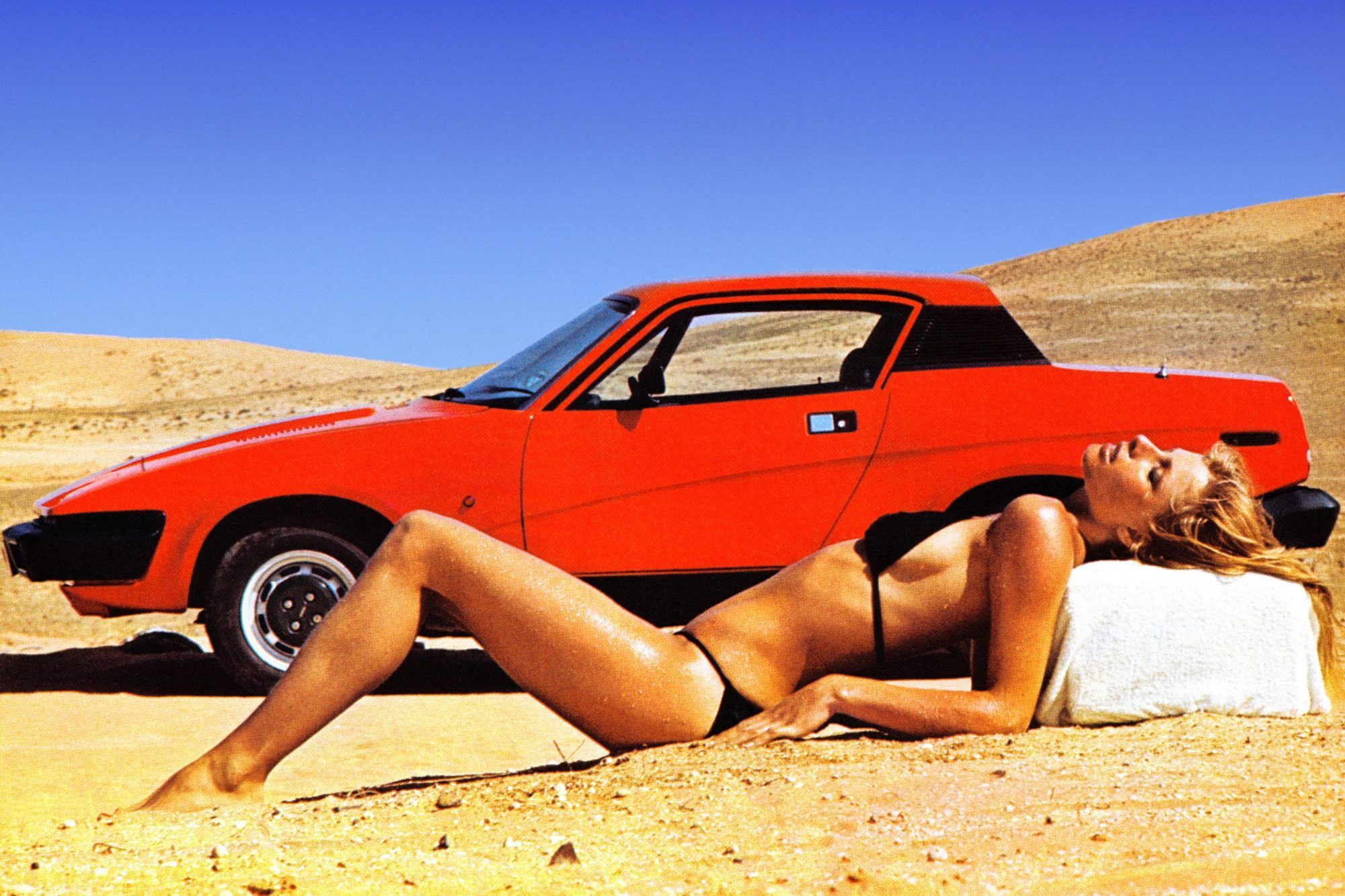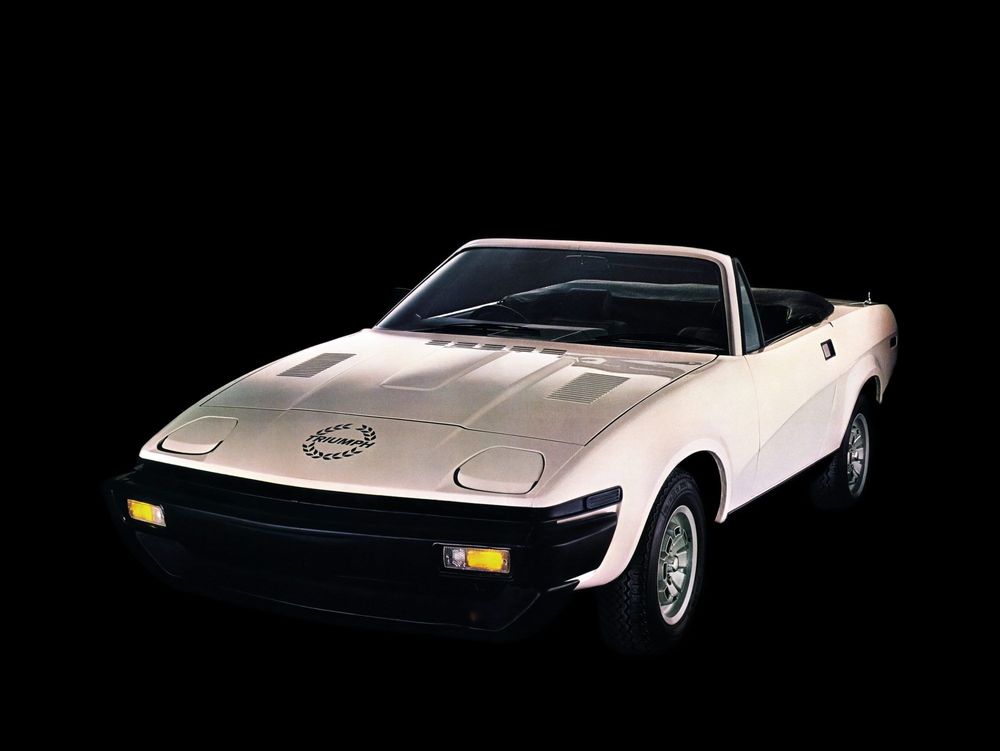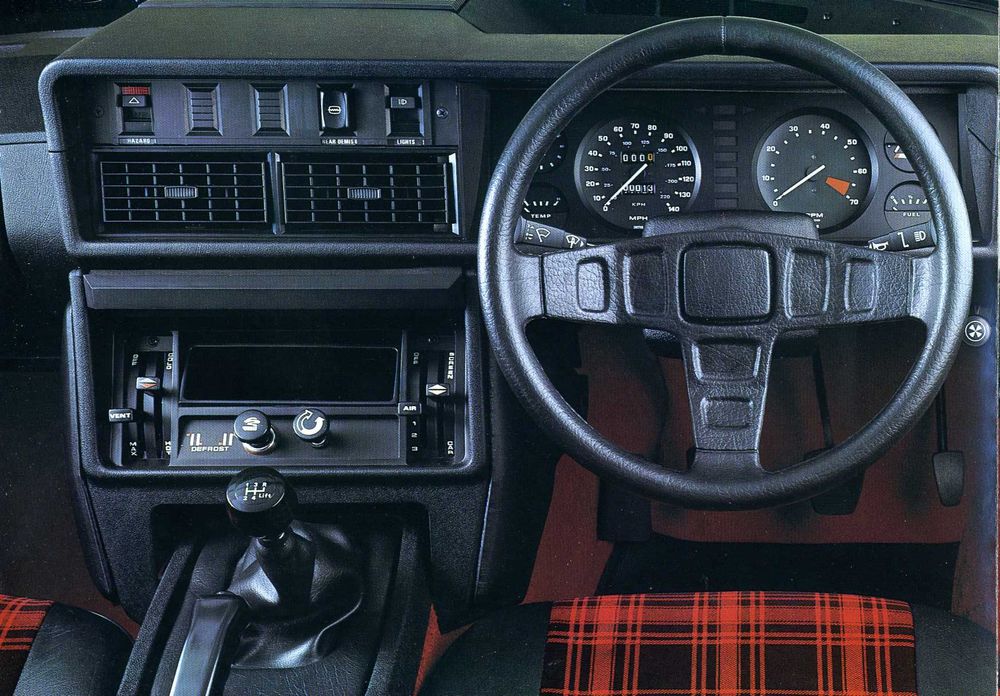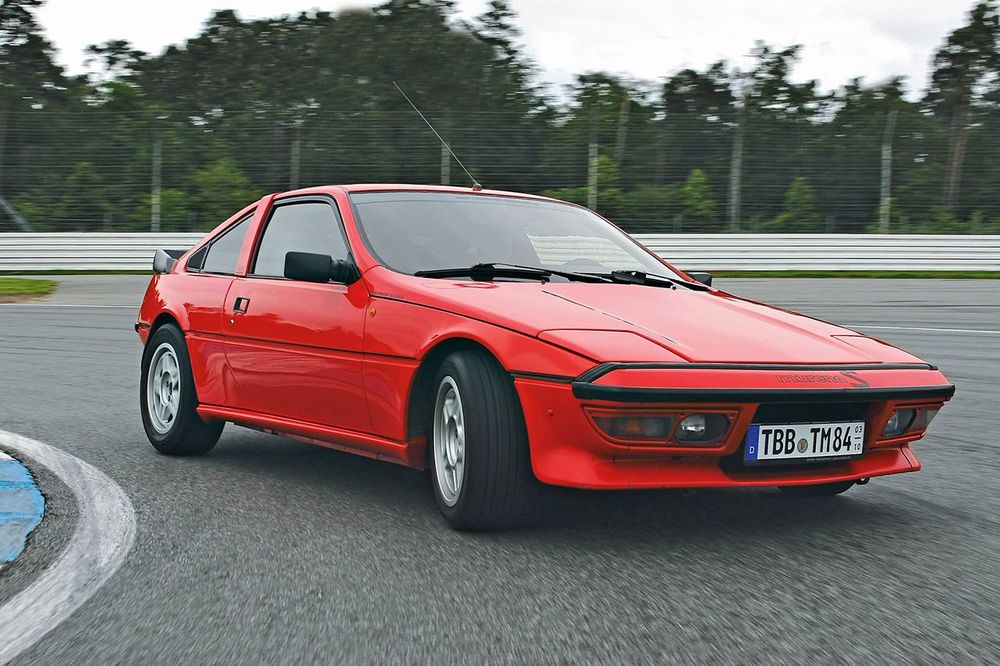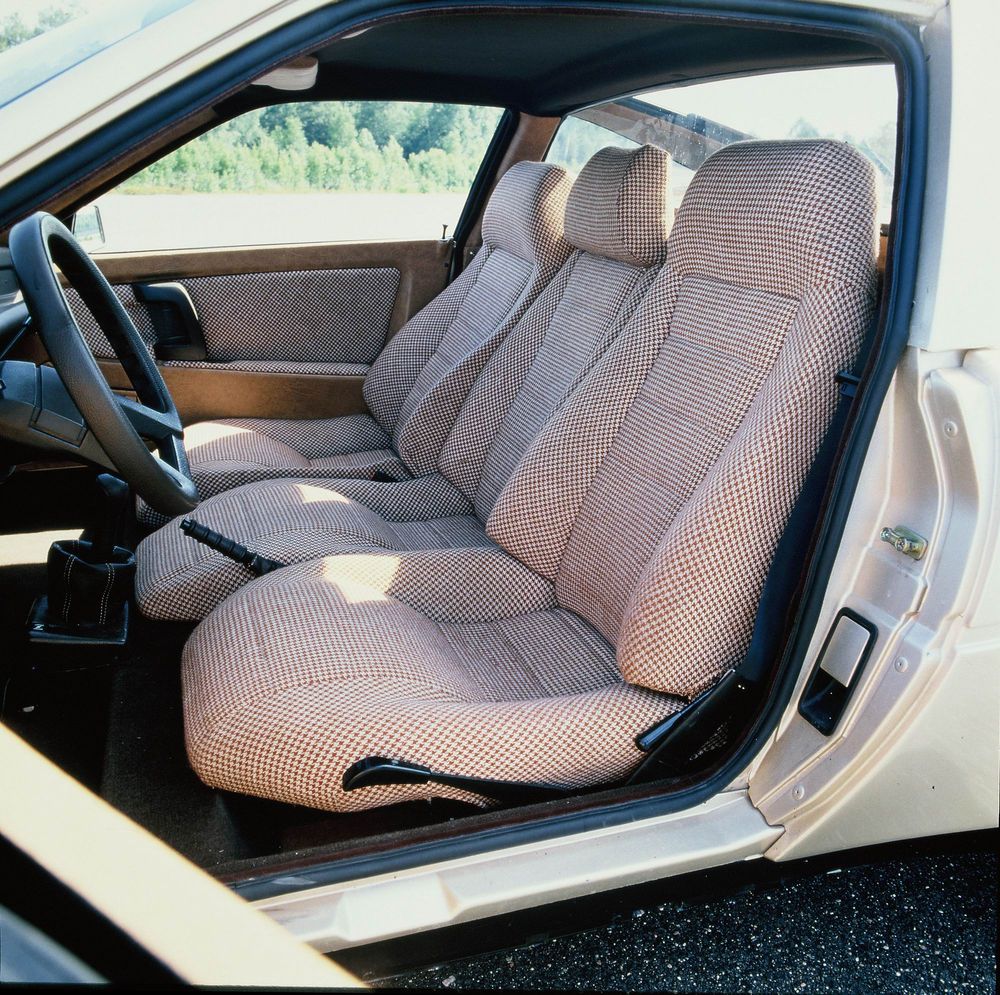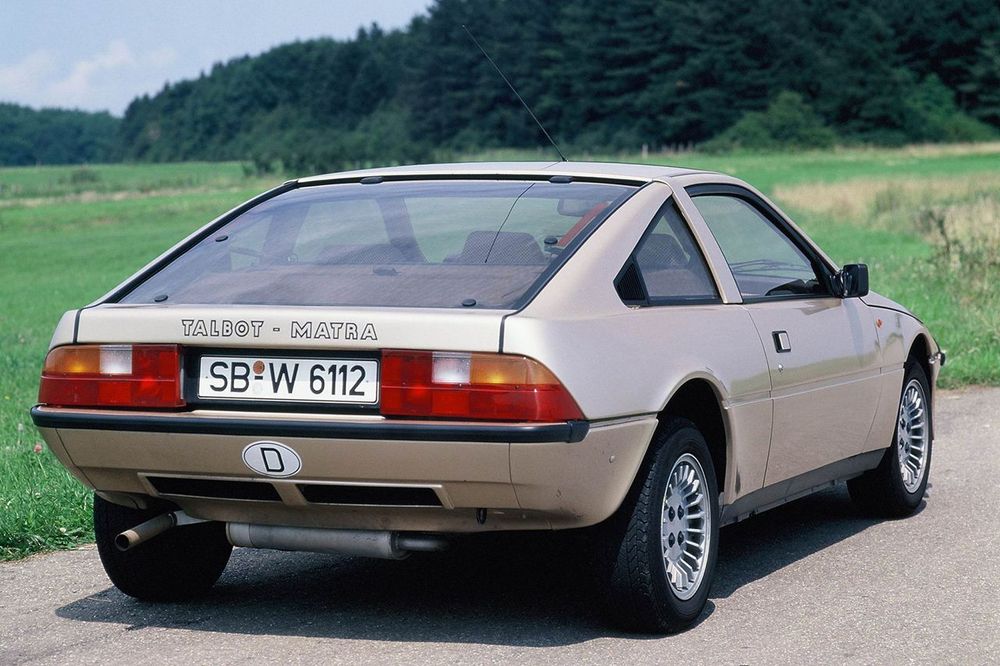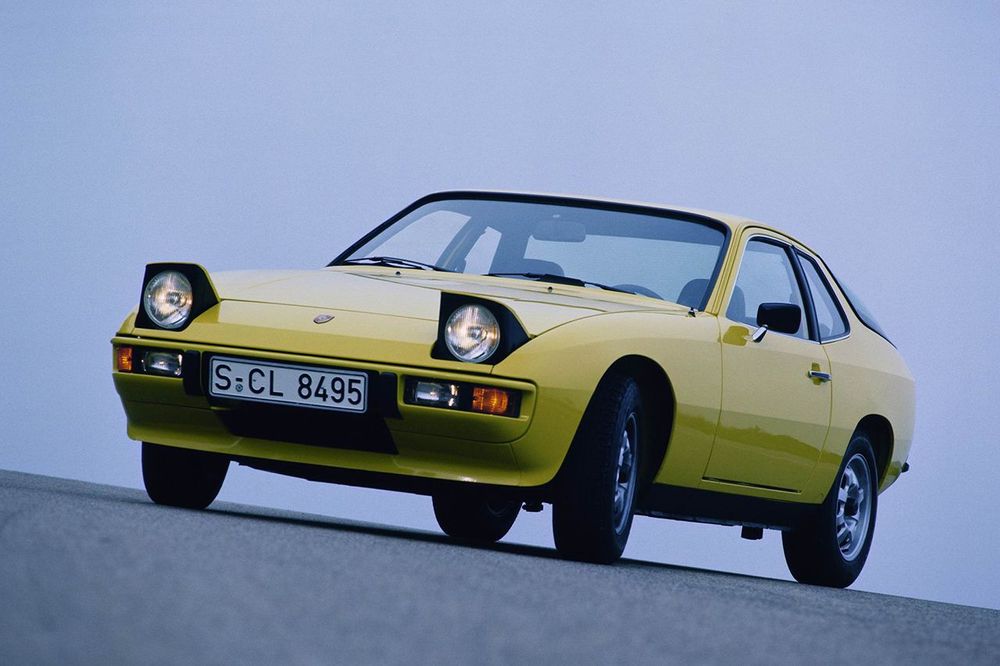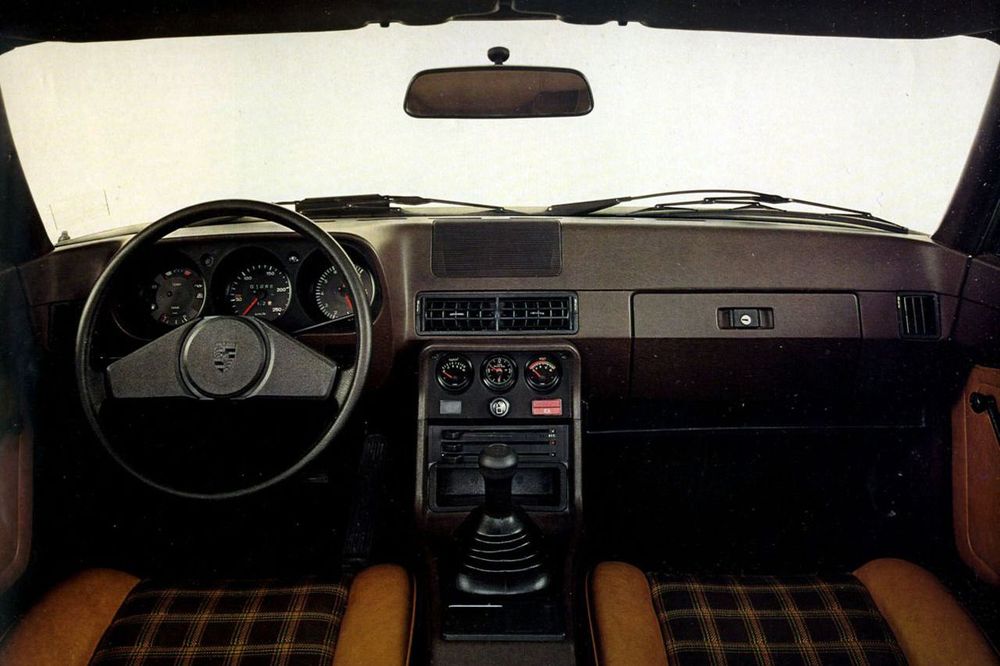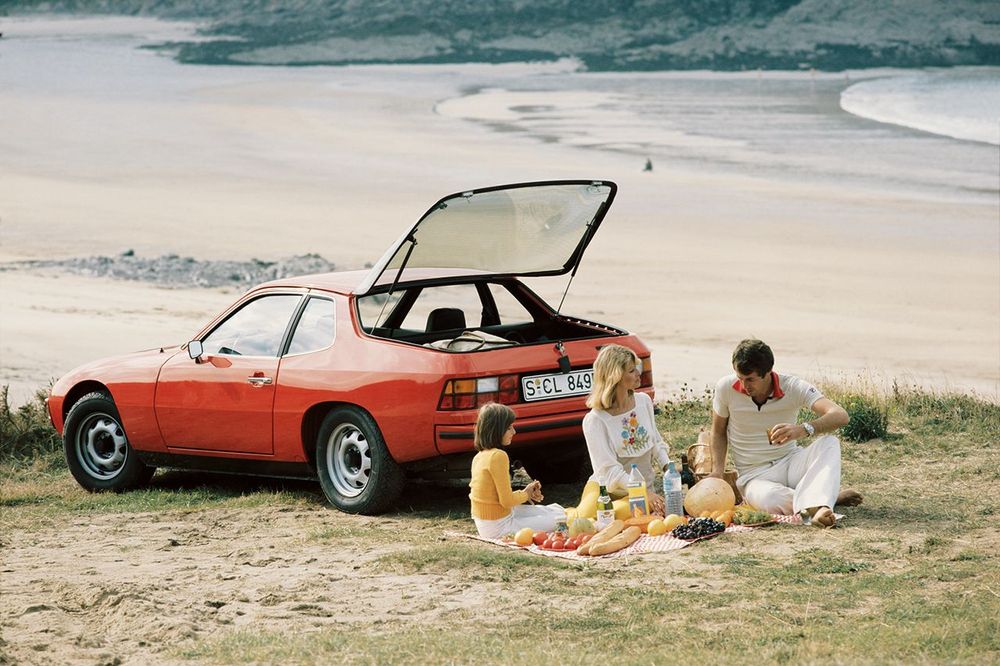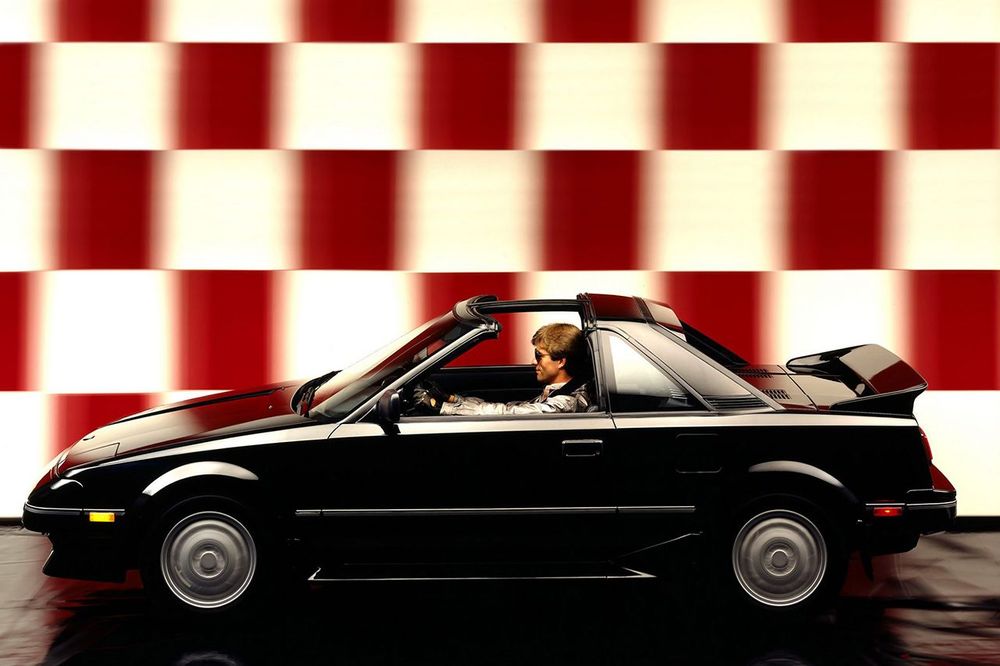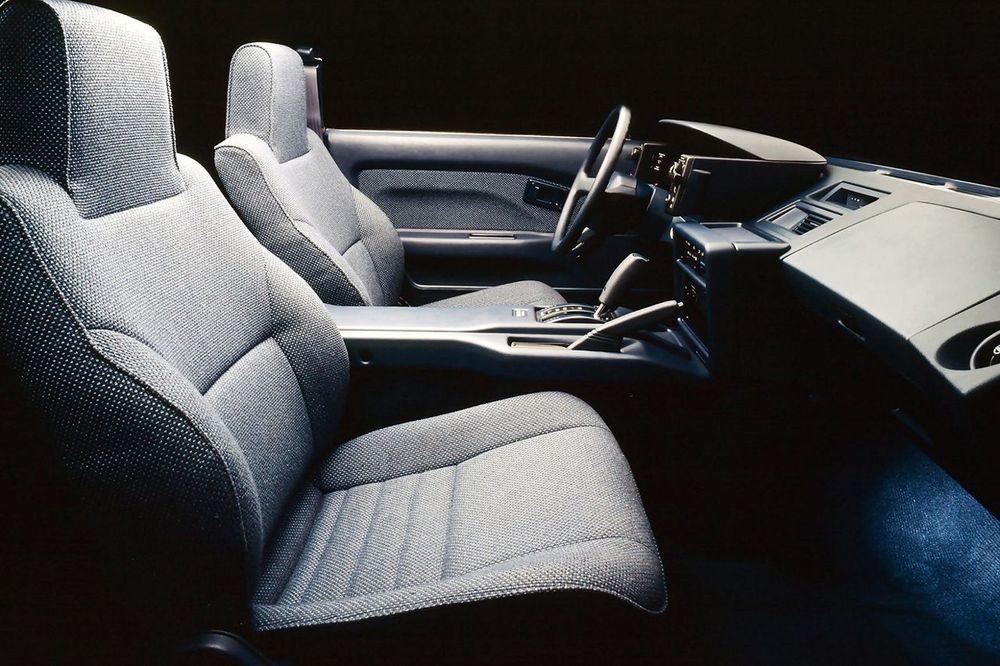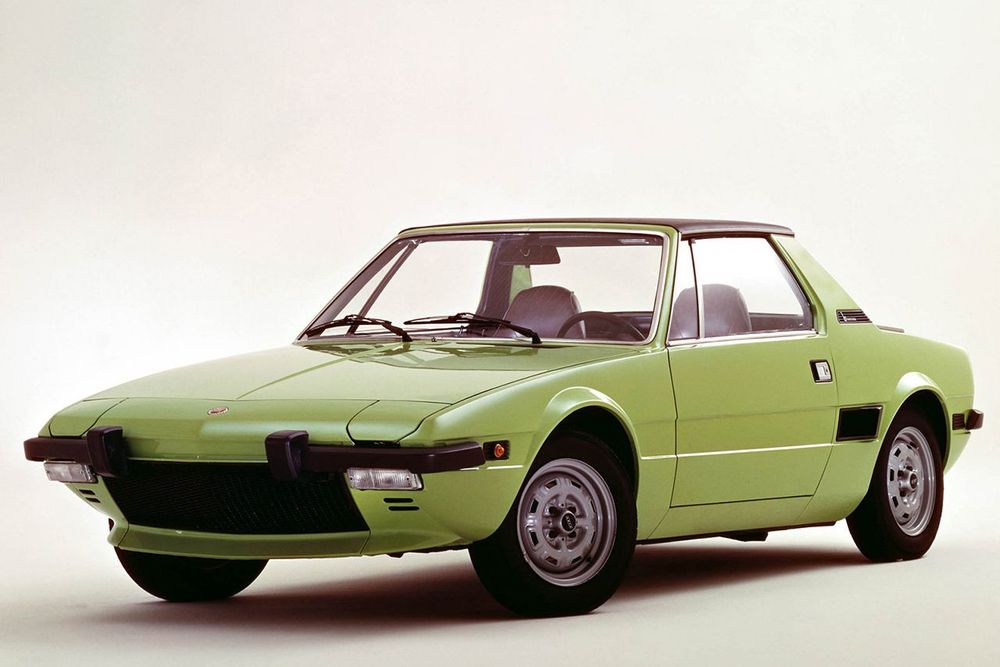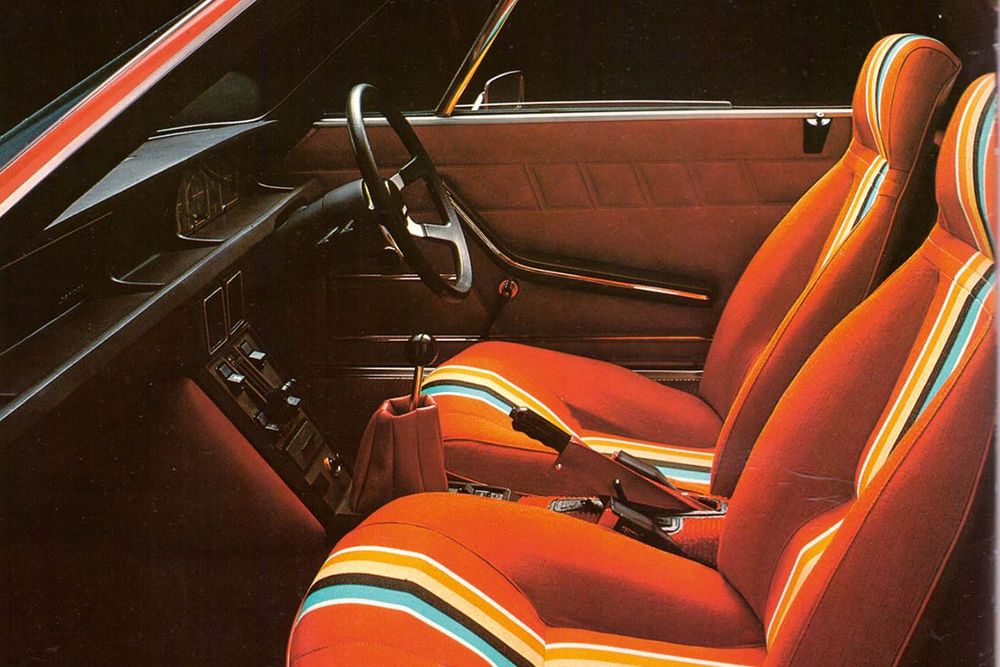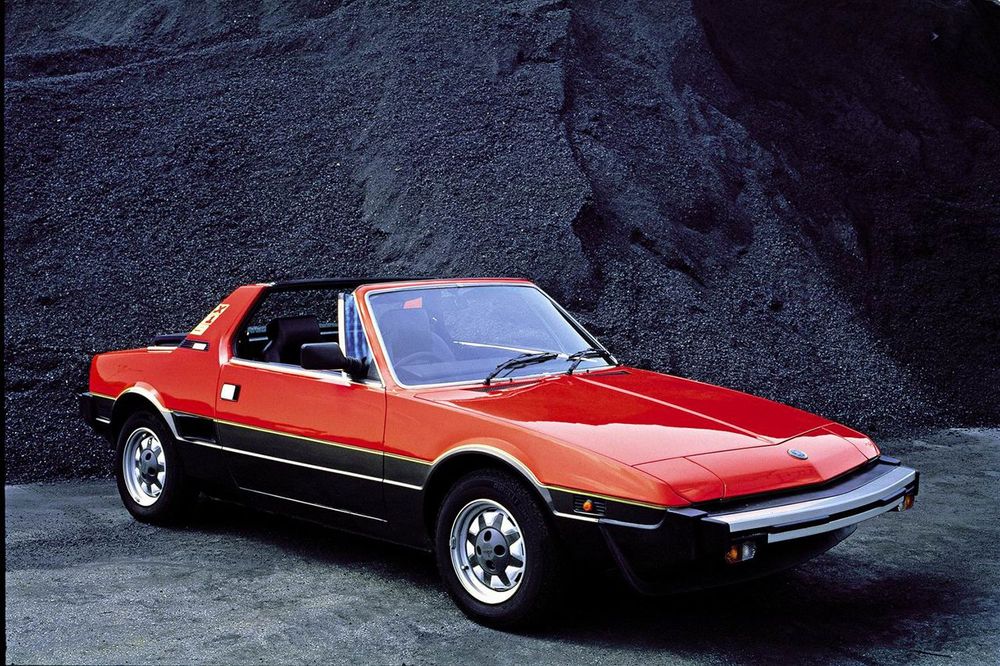Really sporty. Really cheap.
Who never dreamed of retractable headlights, reclined seats, short gear levers, tapered fronts, dashboards full of buttons... as children, these were the fundamental requirements of a sports car. That and a speedometer with an optimistic scale. Today, unfortunately, many sports cars are upgraded versions of utility vehicles or mid-range models, with aesthetic touches that are either subtle or in bad taste. They may be exciting cars to drive, but they don't make your heart beat faster when you open the garage door.
For a model to be considered a true sports car, there are factors that are much more important than acceleration and maximum speed numbers. Forget GTI’s or Coupés, which are nothing more than different clothes for common models. Nothing is more desirable and genuine than a car born from scratch with the aim of generating emotions and driving pleasure. The privilege of having one of these models is not exclusive to the wealthy. To have a car that brings together all the details that make a kid tick, you just need to be knowledgeable.
Of course it would be easy to recommend a Mazda MX-5, an MGB or a Z3 but it was also too obvious and redundant. Therefore, we bring you five more alternative choices, all of them capable of generating tears of emotion or disgust. We can share some tips, but when it comes to luck, you'll have to rely on your own.
Is the Triumph TR7 (1975-1981) an exuberant sports car? Discover five options under €20,000 and stop putting off your dream.
Why this model?
To be able to appreciate the TR7 at all, you must first forget that it is a Triumph and secondly forget that it is a TR. It is clear that this dustpan-shaped roadster does not have the charisma or the “spark” necessary to be a worthy heir to its lineage. To be fair to this model it is necessary to appreciate it in isolation. You may or may not like its appearance, but if we consider that its direct competitor was the old MGB (a car that began to be thought of in the 50s) the TR7 begins to gain dignity. In the mid-70s, a car with these lines and the then avant-garde retractable headlights made a tremendous impression and left all the kids captivated by its spectacularity. The older people, faithful to the traditional TR range, were unable to accept or understand this touch of modernity, which led to jokes about the quality and style of the TR that are still repeated today. However, despite not being a pure sports car, the TR7 had efficient and honest behavior thanks to the independent suspension, a practical and comfortable interior and a general robustness that was in no way inferior to that of its predecessors.
What to look for?
The first decision to make is vital: coupé or roadster? All previous TRs were roadsters, in the purest British tradition. But this is not traditional British so your personal taste should prevail. It's a difficult choice between a hood that leaks water onto your coat and one that rusts with unwavering conviction. Rust is a serious enemy of the TR7 and only a recently rebuilt body can keep it at bay. At this level, the first units are more resistant but, in compensation, instead of the five-speed gearbox of the Rover SD1 they are equipped with the infamous four-speed gearbox of the… Morris Marina. Exotic, isn't it? The TR7 engines have an aluminum head, which may sound positive but is one of the model's weak points. It is common for the heads to fuse with the steel block or suffer excessive wear due to heating and internal corrosion. The engine must be carefully inspected. The interior is made of quality plastics that look pitiful but have resisted over the years. The most extroverted aspect of the Triumph's interior is the Scottish fabric on the seats and pasterns, which is not very resistant to wear and tear. Choose a copy that keeps the fabric intact as this helps to make the environment on board more pleasant.
What is it for?
In the roadster version, it is an interesting, comfortable and affordable proposition for those who want to go for a walk with their hair in the wind. It's not an exciting sports car, but it's slow and balanced enough for lively driving. It's not particularly reliable, but it's also not overly complicated or too old-fashioned to make maintenance difficult. The retro-avant-garde style is in fashion and it is undeniable that these lines marked the 70s and 80s. It won't be pretty, but it doesn't lack personality. The way it displays the Triumph symbol in dimensions visible from a satellite seems arrogant.
Another childhood dream as achievable as this one.
Spend all your allowance on sweets and chocolates. Now that he's an adult, no one can stop him from doing it and the stomach pains can't be much worse than those caused by TR7.
Alternative
The Jensen Healey was less bold in style but featured a beautiful Lotus 16V engine and Vauxhall Viva components. The result was interesting, although it was an unworthy heir to the Jensen or Healey bloodlines.
Triumph TR7
Engine: 4 cyl. in line; forward longitudinal position; overhead camshaft;1998 cc; 2 SU carburettors; 105 hp at 5500 rpm; Transmission: rear; 5 Speed; Brakes: front, disc; behind, drum. With servo brake;Chassis: 2-door, 2-seater steel monoblock;Length: 4067 mm; Wheelbase: 2160 mm; Weight: 1048 kg; Maximum Speed: 180 km/h
Usage: 4
Maintenance: 3
Reliability: 3
Valuation: 2
Matra Murena (1980-1983)
Why this model?
If what you're looking for is an unapologetically sporty car at an affordable price, the Murena is a very interesting choice. Designed with a very small budget and components from humble origins, it was still brilliant enough for Renault to feel the need to scrap it. The story goes that, when Matra approached Renault to sell the Espace project, the latter imposed the condition of eliminating the small Matra due to the shadow that the modest sports car cast on the Alpine A310. The Murena is, therefore, a model that was never done true justice because it didn't even have time to impose itself or to show that it was much better than its predecessor. The Bagheera also had surprisingly good handling, but suffered from repellent lines and a chassis that seemed to have been rotten from the start. Despite this, it sold 50,000 units, an incredible number. The Murena had a galvanized chassis and a very elegant, uncomplicated and extremely well-proportioned body. This ultra-compact sports car could accommodate three occupants, becoming the savior of dreams for young parents who had a child before realizing their childhood dreams. And with an engine of just 1.6 liters and a low weight, they could still convince their wives with the argument of economy.
What to look for
The best Matra-Simca is the Murena S with the 2.2 liter engine and 140 hp derived from the Talbot Tagora. Unfortunately, this is not an easy version to find in Portugal. The 118hp Simca 1.6 engine was not sophisticated, nor even very powerful, but it allowed it to reach 100km/h in 11 seconds and exceed 180km/h thanks to the Murena's low weight. Interesting facts but not crucial to discover the true charms of Matra. His trump card was his brilliant behavior. At the limit it is slightly oversteer, but most of the time it remains impeccably neutral. The suspension, if in good condition, offers excellent absorption of irregularities, making this a surprisingly comfortable sports car. Look for an example with an original interior, as the unusual patterns on the seat fabrics are part of the character of this model. If the nylon roof lining is no longer the original, nothing will be lost. The plastics are all ugly, but of reasonable quality and a pleasant touch, even if the shape of the dashboard is bizarre. Most mechanical parts are easy to find since, like low-cost sports cars, they almost all come from banal and economical models.
What is it for
The Matra-Simca is a sports car with heart and soul, which even bears the family name of brilliant Formula 1 and sports prototypes. Despite this, it is practical due to its dimensions, three seats and some luggage space behind the engine. Mere arguments to excuse buying a car just for the pleasure of driving. It is not suitable for crashing, as the fiber bodywork is expensive to repair and does not offer much protection.
Another childhood dream as achievable as this one.
Once he's an adult, not even his mother can stop him from making a rolling cart and running down the street. The enjoyment won't be much less than it would have been years ago and neither will the potential risks of getting hurt.
Alternative
An Alpine A310 wasn't really a bad idea, but you could buy four Murenas.
Matra Murena
Engine: 4 cyl. in line; front transverse position; overhead camshaft; 1753 cc; Injector bomb; 75 hp at 4600 rpm; Transmission:rear; 5 speed. Manual; Brakes: front, disc; behind, drum. With servo brake;Chassis: 2-door, 2-seater monocoque steel cab with separate box;Length: 4902mm; Wheelbase: 2915mm; Weight: 1347 kg; Maximum Speed: 155 km/h
Usage 4
Maintenance 3
Reliability 4
Valuation 2
Porsche 924 (1976-1988)
Why this model?
Who has never dreamed of owning a Porsche at any price? What if the price is lower than bedroom furniture? The fact that the 924 was born with many VW-Audi genes and had a concept distinct from any previous Stuttgart creation outraged Porsche fans. Today the shock has been overcome and the brand that makes the 911 also makes jeeps uglier than a capybara, with diesel engines similar to those seen in some Passats. Many will tell you that the 924 is a weak car, but that's because they can't ignore the fact that a Porsche should be something better. Others will tell you that it's fantastic because it's a Porsche. The truth is somewhere in between. The 924 is a practical and comfortable car, with good rear seats for children and a large boot. The engine is rustic and unpleasant, but it is reliable and very robust. The 924's interior is well built and relatively sturdy. This is a very simple Porsche to drive due to an almost perfect weight distribution, helped by the transaxle box. The steering has a precision and sensitivity that only Porsches offer. In short, it is a practical, competent and elegant GT, of which there is little in Porsche. But if the problem is having too much VW, then why is a Golf GTI MkI priced higher? Honestly, which one would you rather have?
What to look for
The 924 S, with a 2.5 liter engine and 160 hp, is, naturally, the best choice. The 924 Turbo, with more than 170 hp, is less refined but impresses with its performance. Unfortunately, the prices of these two models make them less appealing. The real charm of the 924 2.0 is the low price and abundance of offer. The vast majority of 924s for sale do not hide signs of abuse or neglected maintenance, because maintaining a Porsche becomes expensive when it comes to purchasing parts. As a result, there are now a good number of 924s in scrap metal, which could be good for those who need parts today. To buy well, choose an example manufactured after 1980, years after which the bodywork began to be completely galvanized, keeping rust at bay. If you still detect it, it could be a sign of an unresolved accident. Models after 78 also have the benefit of a five-speed gearbox, which allows you to make better use of an engine that has a very low useful speed range.
What is it for
The 924 is a small GT, which means it's just as at home driving spiritedly on a winding road as it is stretching its legs on a long motorway journey. In between, he welcomes participating in a track day or taking the kids to school.
Another childhood dream as achievable as this one.
When I was a child I always dreamed of riding in the front seat, next to the driver. Now that no one can stop him, he finds the experience quite boring. Exactly the same thing that can happen if you buy a cheap Porsche.
Alternative
If you like coupés with GT abilities, an Alfetta GTV 2.0 is a viable alternative.
Porsche 924
Engine: 4 cyl. in line; forward longitudinal position; overhead valves;1984cc; Bosch injection; 123 hp at 5800 rpm; Transmission: rear; 5 speed. Man.; Brakes: front, disc; behind, drum. With servo brake;Chassis: steel monoblock with 2 doors and 2+2 seats;Length: 4210mm; Wheelbase: 1656mm; Weight: 1111 kg; Maximum Speed: 203 km/h
Usage 4
Maintenance: 3
Reliability 4
Valuation 3
Toyota MR2 AW11 (1984-1989)
Why this model?
Toyota is a brand capable of making the most boring models imaginable, but when it decides to make a sports car from scratch, it is usually impressive. The MR2, like the 1967 2000 GT, was nothing brilliant or innovative. The secret to his success was to take a proven formula and improve it to near perfection. It is impossible to look at the MR2 and not see almost all the features of the Fiat X1/9 in a revised and updated version. The concept was the same, but without the typical weaknesses of an Italian car, except for corrosion. The MR2 was well built, more spacious and mounted a technologically advanced and extraordinarily resistant engine. The engine is actually a big part of the MR2's allure. The famous 4AGE, derived from the Corolla AE86, is a 16v Twin-Cam and has a sound that invites you to explore the entire immense rev range that ends at 7,650rpm, but which gives a “jump” from 3900rpm thanks to the system T-VIS variable intake. The chassis has remarkable rigidity, even in versions with a “T-bar” roof and the steering, not light, is direct and full of information. Handling is generally neutral but, as with most mid-engined cars, there is a bit of initial understeer that is easily neutralized with the accelerator if the driver is sure of what he is doing. Once the rear's grip limit is exceeded, the MR2 is not as faithful as a Labrador.
What to look for
There is no great diversity of models. There is a closed body and a targa roof. Almost all of the models you find here have the 4AGE engine, but be aware: there is a version with a 1.5lt engine and just 82hp that is clearly underpowered. A supercharged version was also produced, which was never sold in Europe and which does not benefit dynamic behavior. So, all you have to do is worry about finding a good example of the more common 1.6. A major concern will have to be with the bodywork, as it is normal to see rust bubbles all over the MR2. Some MR2 failures in electrical systems, as is the recurring case with window elevators. The brakes on early models are ineffective and the discs are even prone to impulses that generate worrying vibrations above a certain speed. Replacement with larger discs equal to the second phase Mk1 is the solution. As with other popular sports, there are companies specializing in creating aftermarket parts to improve all the known weaknesses of this model.
What is it for?
Despite being a model with good manners, easy to drive and very reliable, its appearance is not deceiving. This is a sport to explore in spirited driving. The aesthetics are not to everyone's taste, which makes it a connoisseur's model, ideal for surprising people on a track day.
Another childhood dream as achievable as this one
They say it's worth going to Disney even as an adult, but if you don't have children, don't go, out of shame. Buying an ugly duckling like the MR2 also requires some self-confidence but then it feels good.
Alternative
Cheap alternative with central engine just the MGF. In other words, there is no alternative.
Toyota MR2 AW11
Engine: 4 cyl. in line; central transverse position; double overhead camshaft; 1587 cc; Honda injection; 122 hp at 6600 rpm; Transmission: front; 5 Speed; Brakes: front, disc; behind, disk. With servo brake;Chassis: steel monoblock with 2 doors and 2 seats;Length: 3925mm; Wheelbase: 2320mm; Weight: 975 kg; Maximum Speed: 197 km/h
Usage 5
Maintenance 4
Reliability 5
Valuation 2
Fiat/Bertone X1/9 (1977-1984)
Why this model?
It was the first mid-engined sports car, accessible to ordinary people. After years in which this effective geometry was almost synonymous with Ferrari or Lamborghini, the people's brand launches a beautiful mid-engine roadster. Even more surprising was the fact that this modest model had even more avant-garde lines than those of top brands. To create the steep slope of the B pillar, Gandini was inspired by the speedboats of that time, an influence that was even more evident in the Autobianchi Runabout prototype presented in 1969 in Turin. Like this prototype, the X1/9 used almost all the mechanical components of the Fiat 128, although placed in different positions. Thus, this four-wheel independent suspension sports car mounted the small 1.3lt engine in a central position. Behind this there was a luggage compartment which, with the help of another one at the front of the cabin, turned the small exotic into a practical model. With its radical appearance and harmless mechanics, the X1/9 might seem like a bad joke, but the truth is that the dynamic chapter made up for any lack of muscle. The Fiat is very quick in curves and, despite having almost 60% of its weight at the rear, it behaves neutrally and enthusiastically. The suspensions do a perfect job of absorbing irregularities, which helps to camouflage any lack of structural rigidity. At the time of its launch, some journalists compared it to the Lotus Elan, due to the intuitive way it drove and the karting sensations it conveyed.
What to look for
From 1982 onwards, the 1500 engine was introduced, with 11 hp more than the original and a five-speed gearbox. There were changes to the interior design and some subtle changes to the exterior. All production was now the responsibility of Bertone and the model began to take on that brand, no longer bearing the Fiat name. Despite the improvement in quality, the aesthetic appeal was reduced with larger bumpers, compatible with American legislation, more discreet interiors and some details more in keeping with the taste of the American market. Despite the indescribable quality interior, the first models are the most appealing. For any hardened driver, the sound of the Weber right behind the back of your head is an intoxicating experience that makes driving slowly almost impossible. Despite the competent and robust mechanics, it is difficult to buy a good X1/9 due to the fragile bodywork. Many owners have given up on restorations for this reason. However, if you find an example in good general condition, it might be worth investing in bodywork protection, as X1/9s in good condition are increasingly rare.
What is it for
The tiny dimensions hide the ability to carry two adults and luggage for a weekend. It's a good model for outings, as it's comfortable. But it is solo and in depth that X1/9 shows what it was born for.
Another childhood dream as achievable as this one
Do you remember that teacher you had a platonic crush on? Now maybe you can convince her to go out with you. It may already be a bit rheumatic. Time leaves many marks, both on women and on Italian cars.
Alternative
Just a Lancia Beta Montecarlo but… where are they?
Fiat X1/9 1300
Engine: 4 cyl. in line; central transverse position; overhead camshafthead; 1290 cc; Weber carburetor; 74 hp at 6600 rpm; Transmission: rear; 4 Vel. Auth.; Brakes: front, disc; behind, disk. With servo brake;Chassis: steel monoblock with 4 doors and 5 seats;Length: 3830mm; Wheelbase: 2202mm; Weight: 880 kg; Maximum Speed: 169 km/h
Usage 5
Maintenance: 4
Reliability 4
Valuation 2



